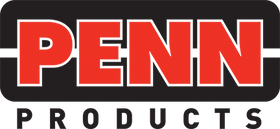Buyer's Guide to Plastic Boxes
Tips for Using our Website
We have designed our website to be intuitive and "search friendly." But since we manufacture well over 100 different plastic boxes (not including special customizations), how can you find what you are looking for quickly?
One approach would be to click on a specific box category if you know that (such as "Electronic Cases" or "First Aid Cases") - this will quickly narrow down your search.
A second approach is to click on "All Cases" and then use the filter tools to focus your search. These tools should be on the left hand side if you are using a PC or will appear when you click the word "Filter" if you are using a phone.
For example, using "filters" you can
- select the number of bays (compartments) you are looking for in a box, and/or
- use the "volume" filter to select a cluster of sizes centered around your ideal volume (of course estimated overall volume of a box is length x width x height in inches), and/or
- select one dimension (say, length) and select a cluster of sizes around that ideal dimension. If you decide to narrow a search by one dimension, it is best not to add additional dimensions. If you do, chances are good that no box will fit all those parameters and so nothing will come up.
Steps like this will help narrow down your search. Feel free to give us a call too - both in finding the right box and inquiring about quantity discounts etc. We are here to help.
A Buyer's Guide to Plastic Boxes
Carrying cases are used every day, in healthcare, military, food and beverage, traveling, and even industrial settings. Penn Products - a leading manufacturer of plastic cases - specializes in these industries and then some. Although carrying cases can be made of materials such as fabric, metal, nylon, leather, wood, or a combination-- here we shall focus specifically on Made in the USA plastic carrying cases that are injection molded . Typically Injection molded cases require very expensive tooling that is designed to produces millions of parts at a relatively low per unit cost. The tooling required to manufacture most plastic cases is an injection mold that runs in piece of machinery called and injection molding machine or Press that clamps the mold shut and injects melted plastic resin in to the mold to form the part. If you are looking for a product that is not available in the market and are interested in designing and building your own product, please keep in mind that tooling and development costs can easily fall in the range of $20K to $100K depending how large and complex your product design is. If you are looking to design your own product you may want to consider hiring a design service first. If you are looking to produce more than 100K units of a custom product you may want to consider investing in an injection mold and will need to build a relationship with a custom molder
Many variations of plastic carrying cases can easily be found in stores or online - think of that lunchbox you had as a kid. However, some cases solely depend on the application and are designed accordingly: you wouldn’t be happy if a medic pulled out a lunchbox when treating you…
Understanding the requirements of the application of the carrying case is the most important step. The types of carrying cases available include:
- Heavy-Duty Instrument or Tool Cases
- First Aid Cases
- Divider Cases
- Electronic Storage Cases
- Display Cases
- Commercial Product Storage Cases
Although there are many other applications for cases, they more-or-less fall into these broader categories.
Deciding on the application is important as this determines the dimensions and design of the case, whether there are any foam inserts or dividers, or even if the case needs to be dust or moisture-proof. Although plastics cases or not as strong as metal cases, they are much lighter, less expensive and can still be built fairly strong and durable which make them a great value.
Since the development time to manufacture a new custom case design can take months and cost 10s of thousands of dollars, finding a case readily available in the market that can be customized with inserts and private labeling is often a much more feasible option.
Once you’ve chosen the application, you need to decide whether your objects may move around in the case or not. This decision will make the difference in longer-lasting equipment.
For example, first aid kits that house equipment that will not break easily, if at all -- such as plasters, ointments, and cotton gauze -- don’t require the foam inserts, but you may want dividers. If, however, you plan on using your carry case to transport breakable equipment, or computers, or larger instruments then opting for foam inserts would best protect your valuables.
If you are concerned about durability, then looking at the features most often used, such as the hinges, handles and plastic polymer material used, will determine the service life of your case and your valuables.
Types of hinges that are commonly used for plastic carrying cases:
- Interlocking Hinge
- Living Hinge
For more on these hinges, see our "Manufacturing FAQ" page
The type of plastic used to manufacture the carrying case is crucial for specific applications. If you are in the food industry, innovative packaging methods are available, however, the type of plastic used must be kept in mind. You will not use the same plastic for your food packaging case as you would for your military equipment case. Therefore, make sure that the plastic material is suitable for your application.
Types of plastics that are commonly used for plastic carrying cases:
- Polypropylene
- Clarified Polypropylene
- Conductive Polypropylene
- Clear Impact-Protected Copolymer
For more on these polymers, see our "Manufacturing FAQ" page
